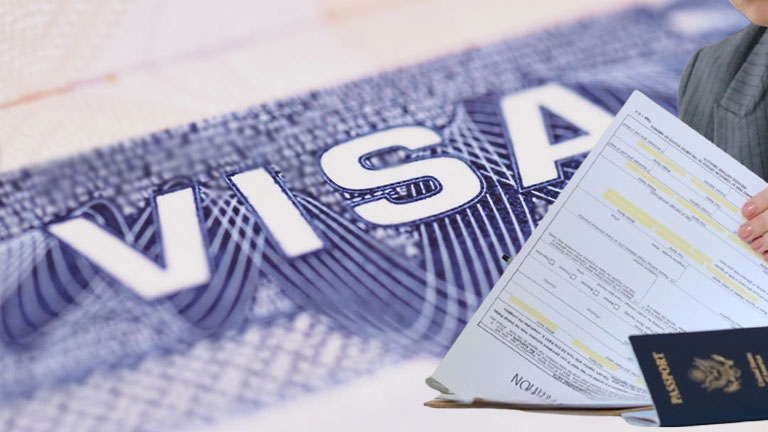
When planning a trip abroad and preparing a visa application, the question often arises: can you complete the documents in your national language? Visa documents are usually processed in the official language of the country you are visiting. Government guidelines in almost all countries clearly state that the visa application and all accompanying documents must be in the country’s recognized language. For example, the US government’s DS-160 visa form FAQ clearly states, “All answers must be in English… Applications submitted in any other language will be rejected.”
Can you submit your visa application in your national language?
Simply put, if you are applying for a visa to a country, you will generally need to apply in that country’s official language or in English.
Language Policy of Most Countries
Most countries have a similar approach: they only accept documents in their national or official language (or languages). Ignoring language requirements can be a significant obstacle in a visa application. Many major countries have regulations requiring translations if documents are not in the required language. For example, countries like the US, UK, Canada, and Australia require that documents not in the national language must be submitted with a certified translation. This means that your application will only be considered valid if you submit a certified translation. Consular officers may reject your application if it is submitted in a different language.
Simply put, visa procedures ensure that their officials can read and understand your documents properly. Therefore, they must either understand the language you submit or have it translated. That’s why most countries’ visa sites state: Documents must be in English or the country’s language; otherwise, submit with a translation.
Rules in the US
This is especially true if you are applying for a US visa. The official FAQ for the US visa application DS-160 clearly states that “all your answers must be in English, in the English alphabet; applications submitted in any other language will be rejected.” Even if your native language is Hindi, you must still answer the questions in English. There is one exception: you can write your name in the native script (such as Devanagari) in the name field, but everything else must be filled in English.
In the US, if you don’t have a birth certificate or marriage certificate in English, you must obtain a certified English translation. The US Citizenship and Immigration Services (USCIS) also clearly states that all foreign language documents must be accompanied by a certified English translation. Otherwise, applicants will be unable to read the document, and your visa may be cancelled.
United Kingdom (UK) and Europe
In the UK, visa documents are valid in English or Welsh. The UK Home Office website and guidelines state that if a document is not in English or Welsh, you must provide a certified translation. For example, it states: “You must provide a certified translation of any document that does not contain English or Welsh.” This means that the UK only understands English or Welsh; translations for other languages will be required.
The rules are similar in Europe. For example, Germany (Schengen visas) states, “If your document is not in German or English, you must attach a translation.” This means that no language other than German or English is accepted. Similarly, the visa process in France requires that if the document is in a language other than French or English, it must be translated into French. The French government clearly states: “Important information: If your documents are in a language other than French or English, they may need to be submitted with a French translation.” In essence, in European countries, your country’s local language will not be accepted; you must apply in English or the local language.
Canada and Australia Rules
Supporting documents for visas in Canada must also be in English or French. The Canadian official website states: “Unless we tell you otherwise, all documents must be in English or French. If the document is not in English/French, an immigration document translation and a translator’s affidavit must be provided.” This means that Canada recognizes only English and French. If you have a certificate in Hindi or another language, it must be translated into English or French, and a translator’s affidavit must be attached.
Australia also has a similar rule: all documents must be in English. The Australian Embassy’s website states: “Any document not in English must be submitted with an approved translation. You must also provide the original document.” This means that Australia only allows English documents and requires translations for all others.
All these examples make it clear that, whether it is the US, Canada, the UK, or Australia, these countries don’t understand your native language. They will ask for documents in their own language (or English). Submitting documents in any other language is simply risky and could result in the application being rejected.
The Need for a Certified Translation
So, if your documents are in your local language, how do you submit them? In most countries, the answer is: a certified translation. In the examples above, we saw that whenever the documents are not in the visa office’s language, you must submit them with a certified translation. A certified translation means that a skilled translator translates the document verbatim and guarantees its exact identity. In many countries, this translation is mandatory through a lawyer or a recognized language expert.
For example, the UK Home Office requires that every translated document be accompanied by the translator’s name, signature, date, and a certificate certifying that the translation is accurate. Canada also provides a guide to certified translations. This is because visa officials want any documents in a non-official language to be clearly understandable. If you submit them without translation, they will ignore them or put your application on hold.
In short, if your file is not in English/French/an official language, get a certified translation from a recognized translator instead of translating it yourself. This will prevent errors in your application and improve your chances of getting a visa.
So when you file a visa application for travel, study, or other things, you cannot submit a visa application in your local or national language unless it is the official language of the country you are applying to. Mostly, documents are in English, or they are translated into the destination country’s official language.


